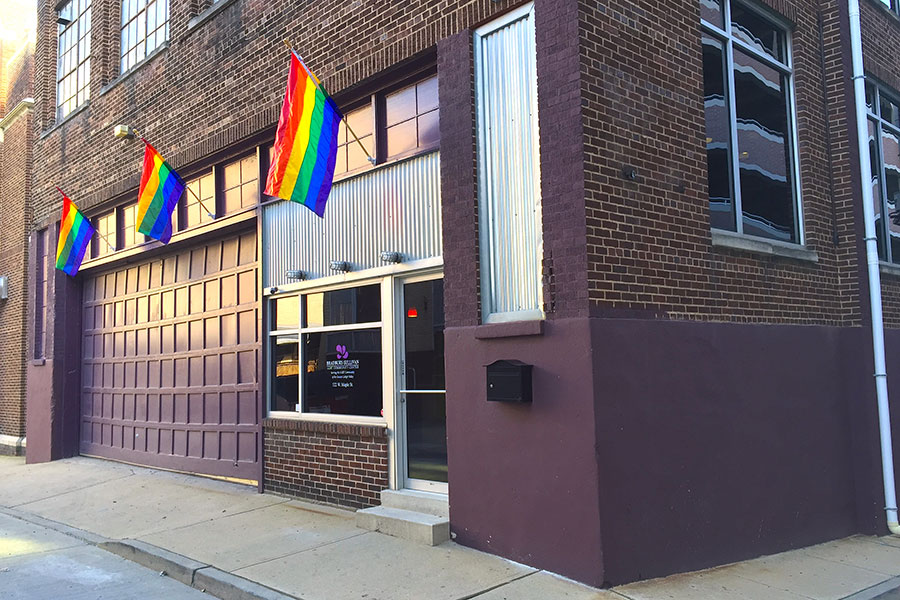In an effort not only to shrink its carbon footprint, but also to dramatically reduce energy costs, the Bradbury-Sullivan LGBT Community Center plans to replace its aging roof and install solar panels, according to Adrian Shanker, executive director of the center.
“We believe that it is our ethical responsibility to consider our environmental footprint as an organization,” said Shanker. “It used to be seen that solar was unachievable and now it’s becoming more accessible, especially to nonprofits. If the cost of energy goes up every year, we’ll continue to see those savings because we’re producing our own energy.”
The project was announced Oct. 30 by the center and will be financed by an anonymous foundation. The solar panels are expected to save the center an estimated $350,000 in energy costs over 25 years, Shanker said.
“We needed a new roof urgently. Solar panels will protect our new roof and strengthen its longevity by providing shade and reducing sun exposure to the roof. We own our own building — a 13,000-square-foot building that uses a lot of energy,” he added.
A local company will do Bradbury-Sullivan’s roofing installation and the International Brotherhood of Electrical Workers Local 375 will install the solar panels — all at no cost to the center.
“It’s not cheap to replace a roof and install solar panels and we can do that because of the generosity of our community. It’s an amazing show of solidarity between the labor movement and the LGBT community of Lehigh Valley,” Shanker said.
Paul Anthony, business manager of IBEW Local 375, said the community-service project “is another way we’re supporting the center and providing experience to apprentices.”
The center worked with SunPulse Solar, a solar-energy company based in Bloomsburg. SunPulse provided an energy analysis estimating that Bradbury-Sullivan would save an average of 46 percent of its energy cost by making the switch to solar energy.
Luke Amick, president of SunPulse Solar, created a 3D model of the building and surrounding buildings to factor in shade or obstruction on the roof. The model provides an accurate idea of the amount of energy that would be produced with solar power.
“The [modeling] software produces an annual-production target and we compare that to the historical usage of the facility. It came up with an analysis projection that 46 percent of the power would come from the solar panels. We take 46 percent, multiply that by the current spending and factor in an average of the historical annual-rate increases from utility companies to come up with an estimate of where that spending is going to go over time,” Amick said. “The equipment is warrantied for 25 years but will produce longer than that. That provides a fixed cost for that energy used rather than a fluctuating unknown for future costs.”
Similarly, Philadelphia is taking steps toward reducing energy costs in city-owned buildings. City Council introduced an ordinance Oct. 31 to build a large-scale solar farm in Adams County that would funnel about 22 percent of electricity to buildings in Philadelphia such as City Hall, Philadelphia International Airport and the Water Department.
The Philadelphia Energy Authority — a city agency that purchases and facilitates energy services — would buy 100 percent of the energy generated by the solar farm with a 20-year deal that would create a fixed-energy rate, preventing the city’s electricity rates from rising even if rates from fossil fuel-based sources continue to increase over time.
Amick noted that the solar industry “has been around since the 1950s, but didn’t really get a foothold in Pennsylvania until the last 10 or 15 years. We’re seeing new support at the state-government level. Bills are hitting the table and hopefully they’ll be passed to increase the amount of renewable generation they require the state to produce.”
Shanker added that the center plans on using the money they’ll be saving to providing “more resources for programs and services for the community. Moving to solar energy means that we can first decrease our environmental footprint and generate cost savings that can go to programs and services that achieve our mission.”

